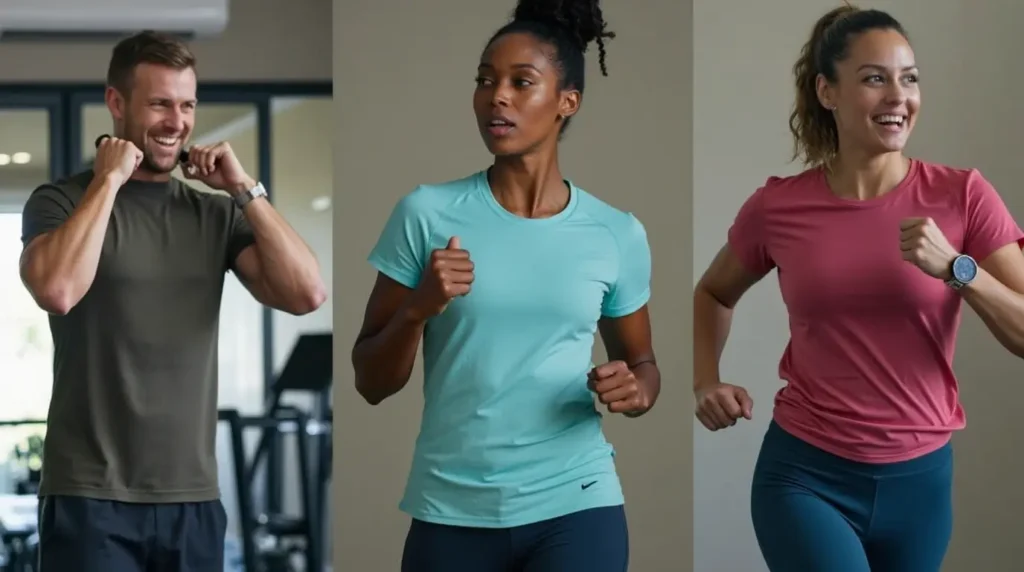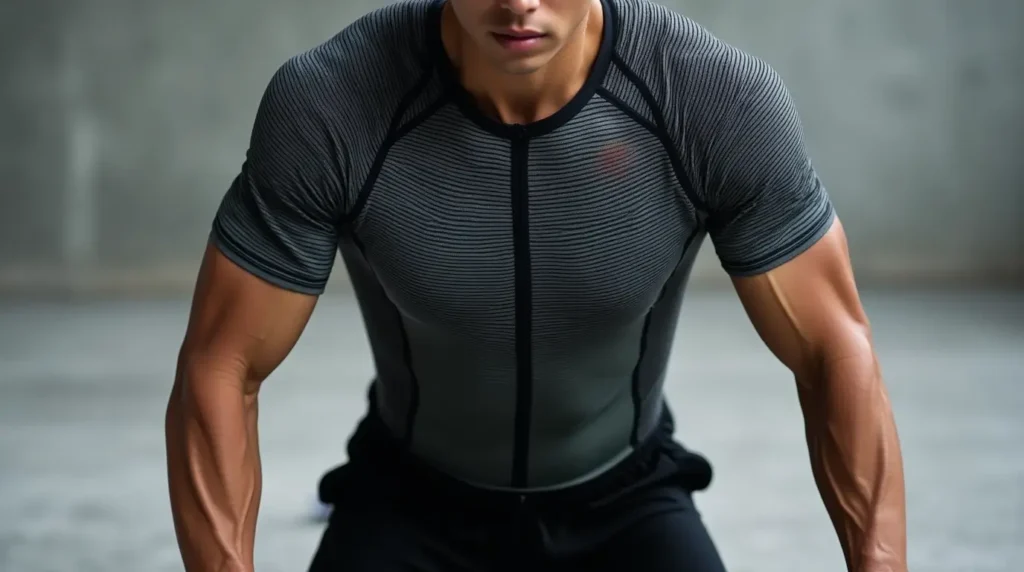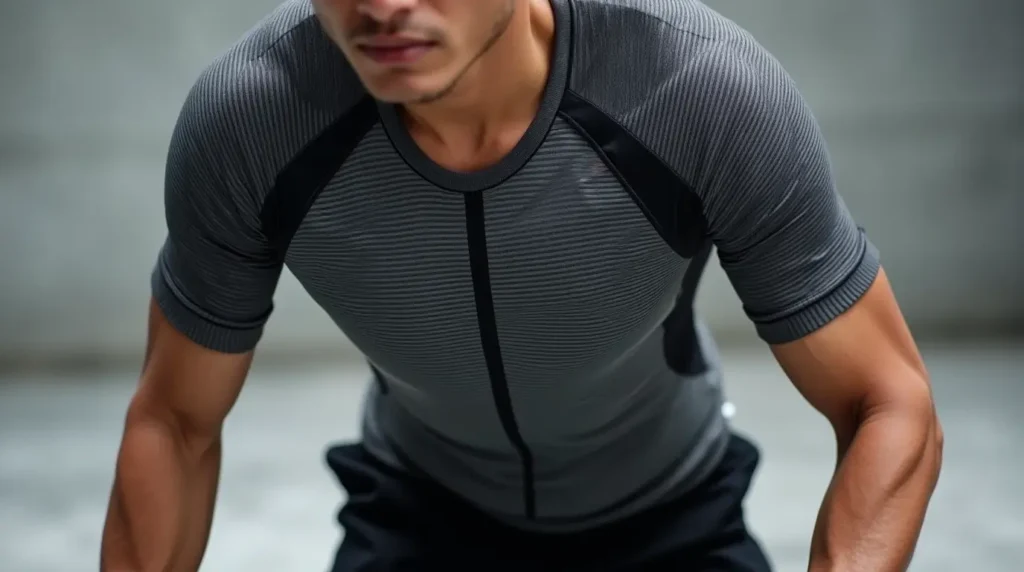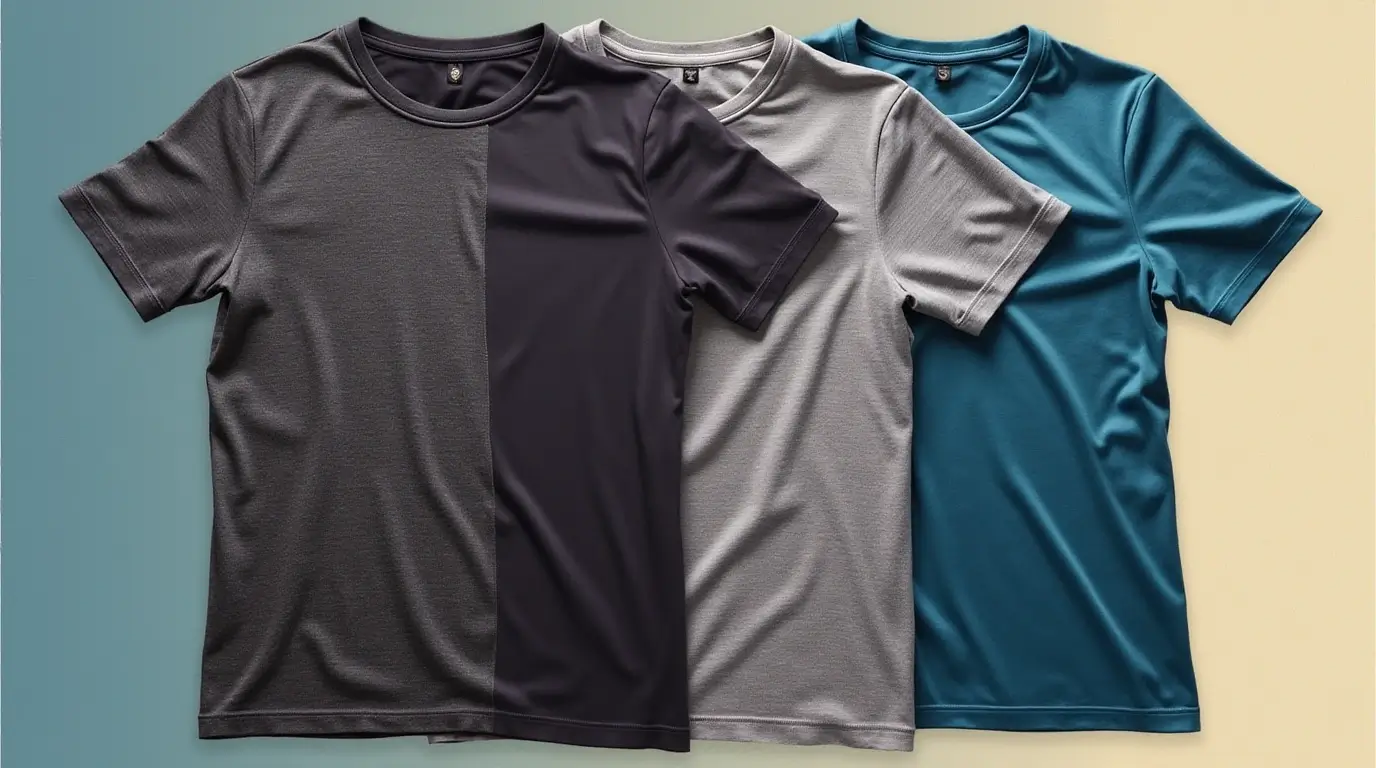Choosing the Right Workout Shirts for Comfort, Performance, and Style
If you’ve ever walked into the gym and struggled to decide what to wear, you’re not alone. The right gym shirt can make all the difference in your workout, but choosing one that combines comfort, breathability, and durability can be tricky. Whether you’re lifting weights, running on the treadmill, or practicing yoga, selecting the best workout shirt can boost your performance, keep you feeling comfortable, and help you focus on your goals. This guide will walk you through everything you need to know to choose the perfect shirt for your gym routine.
Table of Contents
Why Your Shirt Matters: The Impact of a Good Gym Shirt
You may not think much about the shirt you’re wearing when you walk into the gym, but your workout clothes actually play a major role in how you perform. A shirt that fits well, breathes properly, and is made from the right material can keep you comfortable and focused throughout your workout. On the other hand, a poor choice in workout attire—whether it’s too tight, too loose, or made of the wrong fabric—can lead to irritation, discomfort, or even distraction.
This article is here to help you make the best choice for your needs. With the right shirt, you’ll feel more confident, comfortable, and ready to take on your workout—no matter what it is. Let’s dive into the key factors that make a great workout shirt.

What to Look for in a Gym Shirt: Key Features for Optimal Performance
When shopping for a gym shirt, you’ll want to consider several important factors that will directly impact your workout experience. From fabric and fit to breathability and durability, here’s what to look for:
Fabric: The Foundation of Comfort
The material your shirt is made from is one of the most important factors in choosing the right workout shirt. A good fabric should be breathable, moisture-wicking, and able to handle the demands of your workout routine. Let’s break down some of the best fabrics for gym shirts:
- Polyester: This synthetic material is one of the most popular choices for gym wear. It is lightweight, durable, moisture-wicking, and quick-drying. Polyester also retains its shape after washing, making it a practical and long-lasting option.
- Nylon: Known for its smooth texture, nylon is both soft and stretchy. It’s highly breathable and dries quickly, making it perfect for high-intensity workouts like HIIT or running.
- Merino Wool: If you’re looking for a natural fabric, merino wool is an excellent choice. It regulates temperature, wicks moisture, and is naturally odor-resistant. It’s ideal for longer workouts or outdoor exercise.
- Spandex/Elastane: These materials are often blended with other fabrics to provide stretch, flexibility, and compression. If you need full mobility and muscle support, look for shirts with a spandex or elastane blend.
Fit: Comfort and Freedom of Movement
When choosing a gym shirt, you’ll want to strike a balance between a shirt that fits snugly and one that gives you enough room to move freely. Here’s what to look for in terms of fit:
- Fitted Shirts: These are perfect for activities like weightlifting or CrossFit, where you want the shirt to hug your body and not get in the way. A fitted shirt can also provide some compression, which may enhance blood flow to the muscles.
- Semi-Fitted Shirts: If you prefer a little more room without going too loose, a semi-fitted shirt is a great option. It offers the freedom to move without feeling too restricted.
- Loose-Fitting Shirts: These are ideal for cardio workouts like running or cycling, where you may need extra airflow. A looser fit will keep you comfortable and allow for more air circulation during your session.
Breathability and Ventilation: Stay Cool and Dry
Breathability is key to staying comfortable during your workout. Shirts that trap sweat and don’t allow for airflow can cause discomfort and even skin irritation. Look for workout shirts with the following features:
- Mesh Panels: Many shirts are designed with mesh panels under the arms or along the back to improve airflow. These panels let heat escape, keeping you cool and dry throughout your workout.
- Lightweight Fabrics: Lighter fabrics like polyester blends or merino wool allow for better ventilation, making them ideal for high-intensity workouts.
- Moisture-Wicking Properties: A good gym shirt should pull sweat away from your body and allow it to evaporate quickly. Fabrics like polyester and nylon are excellent moisture-wicking materials, while cotton tends to absorb sweat, making it less ideal for workouts.
Durability: Long-lasting Performance
Your gym shirts should withstand frequent washing, stretching, and intense workouts without losing their shape or effectiveness. Durable fabrics like polyester, nylon, and merino wool will hold up over time. Additionally, shirts with reinforced seams are less likely to tear or stretch out, even after multiple uses.

Types of Gym Shirts and Their Benefits
Different types of workouts require different kinds of gym shirts. Here’s a breakdown of some of the most popular styles and their benefits:
Performance Shirts: For Lifting and Strength Training
If you’re lifting heavy weights or doing bodyweight exercises, you’ll need a shirt that allows for full range of motion and won’t interfere with your movements. Performance shirts are typically made from moisture-wicking fabrics like polyester or nylon, and they are designed to fit snugly around the chest and arms to prevent the fabric from getting in the way of your lifts.
- Benefits: Allows for unrestricted movement, keeps you dry, and maintains comfort during heavy lifting.
Compression Shirts: For Support and Recovery
Compression shirts are designed to fit tightly around your body, providing muscle support during high-intensity workouts. These shirts are often made with a blend of spandex and nylon, offering both flexibility and compression. Compression wear helps increase blood flow and reduce muscle fatigue during strenuous workouts, and it can even aid in muscle recovery post-workout.
- Benefits: Supports muscles, reduces fatigue, and improves circulation during and after exercise.
Athletic T-Shirts: For Cardio and General Workouts
If you’re doing a mix of cardio exercises, such as running, cycling, or swimming, an athletic t-shirt made from lightweight, breathable fabrics will keep you cool and dry. These shirts are generally loose-fitting to provide maximum comfort and airflow.
- Benefits: Ideal for general workouts, cardio, and keeping cool during longer sessions.
Sleeveless Workout Shirts: For Flexibility and Freedom
If you prefer a workout shirt that provides maximum flexibility, especially for upper body movements, a sleeveless shirt could be your best choice. These shirts are typically made from breathable, moisture-wicking fabrics that keep you cool during intense workouts.
- Benefits: Unrestricted arm movement, ideal for hot weather and intense exercises like weightlifting.
Choosing the Right Shirt for Your Workout Type
Every workout has different demands, so choosing the right shirt depends on the activity you’re engaging in. Here’s a breakdown of what works best for different types of workouts:
For Weightlifting
- Fabric: Polyester, nylon, or a blend of spandex.
- Fit: A fitted or semi-fitted shirt allows for a full range of motion while preventing the shirt from getting in the way.
- Features: Look for moisture-wicking properties to keep you dry during heavy lifts.
For Running
- Fabric: Lightweight and breathable materials like polyester or merino wool.
- Fit: A looser fit will allow for freedom of movement, especially for long runs.
- Features: Opt for shirts with mesh panels or ventilation zones to enhance airflow.
For Yoga
- Fabric: Soft, stretchy fabrics like spandex or bamboo blends.
- Fit: A fitted shirt that allows for full range of motion.
- Features: Choose moisture-wicking shirts to keep you dry during longer sessions.
For High-Intensity Interval Training (HIIT)
- Fabric: Polyester or nylon blends that are sweat-wicking and breathable.
- Fit: A fitted or semi-fitted shirt that stays in place during intense movements.
- Features: Look for shirts with extra breathability to prevent overheating.

Caring for Your Workout Shirt: Extend Its Lifespan
To get the most out of your gym shirts, you need to care for them properly. Here’s how to make sure your shirts last for the long haul:
- Washing: Avoid using fabric softeners, as they can break down the moisture-wicking properties of your shirt. Instead, wash your workout clothes in cold water to preserve their fabric.
- Drying: Air-drying is the best option for maintaining the fabric’s integrity. If you must use a dryer, choose a low-heat setting to avoid shrinkage.
- Storage: Store your workout shirts in a cool, dry place. Avoid leaving them in damp gym bags to prevent odors and fabric damage.
FAQ Section
What are the best fabrics for workout shirts?
- The best fabrics for workout shirts are moisture-wicking materials like polyester, nylon, and merino wool. These fabrics keep you cool, dry, and comfortable throughout your workout.
Should I wear a tight or loose workout shirt?
- It depends on the workout. Tight shirts are best for lifting weights or intense training, while loose shirts offer more comfort for cardio activities.
Can I wear cotton shirts to the gym?
- While cotton is comfortable, it tends to absorb sweat and can become heavy and uncomfortable during high-intensity workouts. For optimal performance, opt for moisture-wicking fabrics like polyester or nylon.
How often should I replace my workout shirts?
- Replace your workout shirts when they start losing their shape, moisture-wicking properties, or comfort. Typically, a well-cared-for gym shirt can last a year or more.
Conclusion: Finding the Right Gym Shirt for You
Choosing the best workout shirt is about more than just picking something that looks good. By focusing on key factors like fabric, fit, breathability, and durability, you can ensure that your shirt works as hard as you do. Whether you’re lifting, running, or doing yoga, the right shirt will keep you comfortable and confident throughout your workout.
So, the next time you’re gearing up for a session, think about what kind of shirt will make the biggest impact on your performance. With the right shirt, you’ll be able to focus on your workout and reach your fitness goals faster.
Now that you’re armed with all the knowledge on how to choose the best workout shirt, it’s time to upgrade your gym wardrobe and take your fitness journey to the next level.

